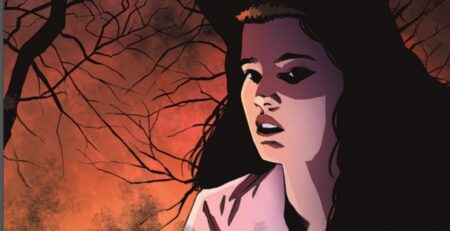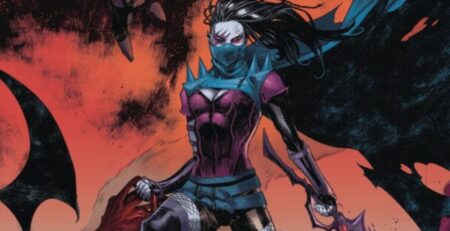Doodleville is published by Random House Graphic and is written and drawn by Chad Sells. Meet Drew. Drew is a young girl who loves to doodle. She spends most of her time in her parents’ dinner just doodling away. But Drew’s doodles come to life! They run around and explore. But their shenanigans eventually get out of hand so Drew creates a home for them on her bedroom wall. That home is Doodleville. But when she absentmindedly takes her doodles with her on a trip to the art museum, things start to change.
Problems begin to mount as Drew’s art begins to feed on the negativity within her. Art reflects life. And Drew, along with the help of her friends in the Art Club, and her supporting parents, is going to find out just how much it can take to understand how to deal with all the emotions that can grow inside us.
The best stories aimed at young people are those that balance entertainment with wonderful life lessons. They possess an alluring quality of fun that draws the child in and uses its presentation to sneak in truly important messages about life. Doodleville does this remarkably well. Drew and her silly doodles are the wonderful hooks, and the story that grows around them is a deep and meaningful one that every child could use in their lives.
The themes running through Doodleville are almost too numerous to count. Sells packs this book with messages concerning acceptance, how emotions can manifest externally, how to support through compassion without being forceful, and so many more. A tour de force of life skills often overlooked in media targeted for the young. And all this is wrapped up in a story filled with lighthearted imagination.
Drew’s struggle begins when the local art club visits the art museum. Their visit there is in the hopes of inspiring the kids to make new art projects. From this trip, Drew decides she needs to create something bigger than her previous works. Inspired by a painting titled “The Leviathan, “ Drew creates a giant sea serpent-looking piece of art. Like all of Drew’s other creations, this one comes to life when she shows it off for the club. Her new creation, which she calls Levi, accidentally starts demolishing the other students drawing. In her panic Drew tries to scribble Levi out. Drew comes to feel terrible for what happens and blames herself for the other kids’ pieces being ruined. Her negativity comes to life in Levi who begins to appear whenever Drew’s emotions take a turn to the negative.
At first, Drew tries to hide Levi’s continued appearances in her life. But as her emotional state continues to worsen, those around her take note and reach out. Plans are formed, and those who care about Drew help see her through her struggles. The final solution is a beautiful moment of communal help and togetherness. The positive message and fun imagination imbued in this story is something I know eight-year-old me would’ve loved.
Another aspect of Doodleville I love is the casual diversity within its pages. The kids in the art club are a realistic mix of backgrounds, allowing any child to find someone they can see as themselves. There is also some lovely LGBTQ representation in the form of two fictional characters one of the students creates. These two magical princes are described by their child creators as heroes who protect their kingdoms and take romantic vacations together.
What I like most about the way Sells delivers this particular aspect of the story is that nothing more needs be said about this aspect of the characters. None of the students question why they behave this way. No eye is batted at it. They are who they are, and the story moves on. Just as it would with any other romantic couple. While addressing the issues of intolerance that our society still struggles with is important, I love the idea of kids getting the message that it’s not even something to discuss. It is what it is, just like everyone else.
While the story of Doodleville is executed marvelously, the artwork easily keeps pace with it. Sells’ visuals are gorgeous. They pop so much, bringing to life every clever doodle and fun moment. But even more importantly, it also captures Drew’s emotional struggles just as well. One sequence in particular really stood out for me.
While Drew is struggling to round up her doodles that are loose at the art museum she has an encounter with an angry old lady. This woman scolds her for even being at the museum, claiming it was a place for high art and not drawings like hers. Already flustered, Drew is hurt deeply by this encounter. As she runs from the woman the panels become more and more erased around her. This imagery really hit me. I found myself really relating to Drew, as I, and probably all of us at some point, have also experienced the feelings she is going through her.
While I could go on praising its wonderful art, lovely characters, and positive themes forever, I will stop now and simply say I cannot recommend Doodleville enough. It handles everything it approaches with the perfect balance of seriousness and fun. The sort of light touch that teaches kids without them even realizing it. If I had a child, I would already be ordering this book.
Doodleville is available in stores on June 9th.
Doodleville
TL;DR
While I could go one praising its wonderful art, lovely characters, and positive themes forever I will stop now and simply say I cannot recommend Doodleville enough.








